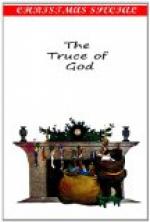To Emmitsburg, to his “boys”, the young professor of English literature gave his enthusiasm, his idealism, his love of all that was fair in art and the world of books. His enthusiasm inspired them with a love of artistic excellence, which, neither in his own work, nor in that of his pupils would tolerate anything commonplace. Before coming to Thornbrook, he had written “The Truce of God,” first published as a serial in the United States Catholic Magazine, established by John Murphy of Baltimore, and which under the editorship of Bishop Martin John Spalding and the Rev. Charles I. White achieved a national reputation. Two other tales, “Loretto,” and the “Governess,” had also been published and were extremely popular. Like “The Truce of God,” they were of the purest moral tone, elegant in diction, the work of a thorough literary craftsman. In 1850, the American actor, Edwin Forrest, offered a prize of $1,000.00 for the best drama written by an American. Miles easily carried off the reward with his play “Mohammed.” Rich with all the colors of the East, glowing with the warmth and poetry of Arabian romance and story, “Mohammed” was rather the work of a thinker and a poet than of a master dramatist. It was never acted, Forrest himself judging that it had not that ebb and flow of passion, nor that strong presentation of character which of all things are so necessary for the stage. Yet in other plays, notably in “Senor Valiente” and especially in “De Soto,” and “Mary’s Birthday,” Miles showed that in him the dramatic note was not lacking, and in both he scored remarkable successes.
From Baltimore, after he had left the pursuit of the law, and from Thornbrook, close to the academic halls in which from 1859 he passed his entire life, Miles seldom emerged into public notice. Twice he visited Europe, his impressions of the second journey (1864) being recorded in “Glimpses of Tuscany.” In 1851 President Fillmore sent him on a confidential mission to Madrid. That same year, John Howard Payne, the loved singer of “Home, Sweet Home,” was reinstated in his consulship of Tunis. Like Miles, that wandering bard was a convert to the Catholic Faith. But unlike Miles, he did not enter the Church until the very end of his life, practically on his death bed. Catholics will be glad to know that the song, “Home, Sweet Home,” whose underlying melody Payne caught from the lips of an




